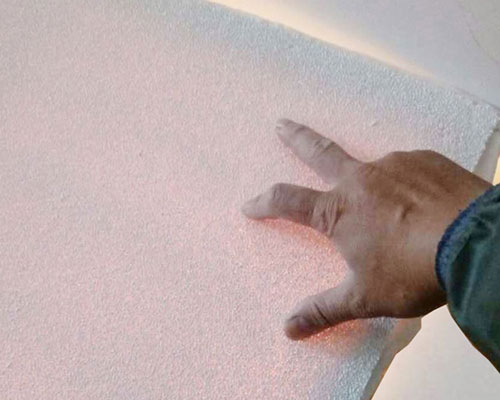How to choose the correct ceramic foam filters?
There are many impurities and the casting quality is average. A ceramic foam filter with a larger mesh can be used, and a glass cloth coarse filter is added in front of the filter. At this time, semi-continuous casting is important for coarse filtration using glass cloth. It can cut off the slag from the opening of the furnace eye, and wash the slag from the car wash pool to prevent the filter plate from clogging.
The aluminum casting products are of high quality, and the new type of macroporous ceramic foam is used.
The specifications of the ceramic foam filter are determined by the flow rate of the aluminum melt and the total output.
The color is pure and free of impurities, indicating that the material is uniform; the hands are not sticky, indicating that the surface is not sprayed with adhesive, which will not cause secondary pollution.
When purchasing a ceramic foam filter, carefully evaluate the effective specific surface area or porosity calculation of the foam. You can observe the homogenization state of the mesh surface of the filter plate, and then observe the homogenization state of the cross-section mesh. If possible, the porosity can be calculated by the drainage method. The three-dimensional grid is uniform and the porosity is relatively large, which is an excellent ceramic filter plate.

Choose Ceramic Foam Filters
Transmittance refers to the effective filter area of the foam ceramic filter product. The higher the light transmittance, the fewer blind holes, and the more effective the filter holes (pit holes), the better the filter effect.
Place the ceramic foam filter to be inspected on a light box equipped with a 200W incandescent bulb, and use a uniform 5.0×5.0 mm square transparent plastic square plate to measure the area plate of the large surface of the filter for calculation and testing. The light transmittance of the filter plate is used to determine the light transmittance of the filter plate. In this standard, the transmittance (through-hole ratio) of the filter plate is specified as 95% or more.
Porosity is the percentage of the total volume of the cavities in the filter plate product relative to the total volume of the filter plate product. The porosity determines the filtration capacity of the ceramic foam filter per unit volume. The greater the porosity, the greater the filtering flow of the filter plate, and the stronger the filtering capacity.

